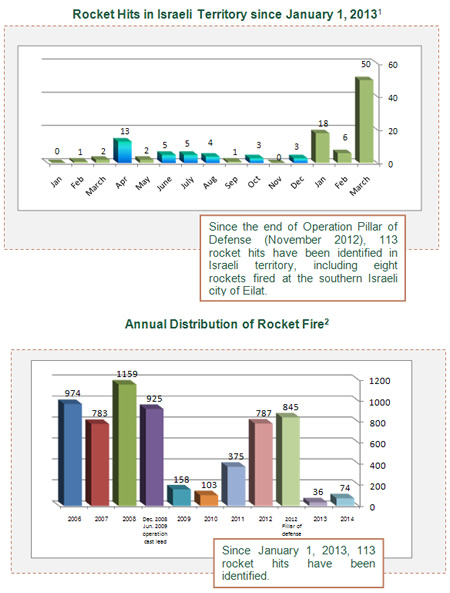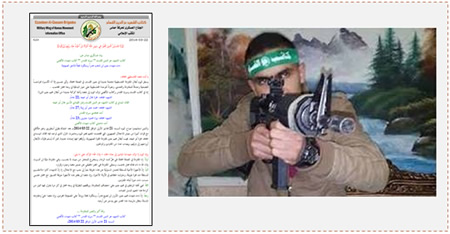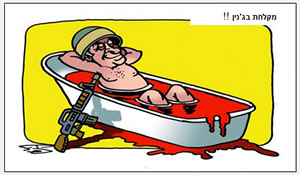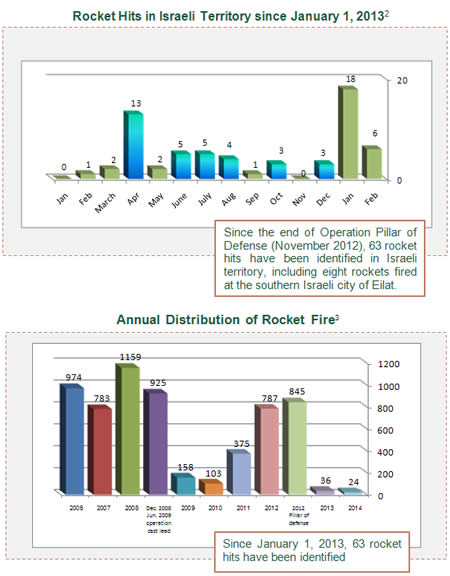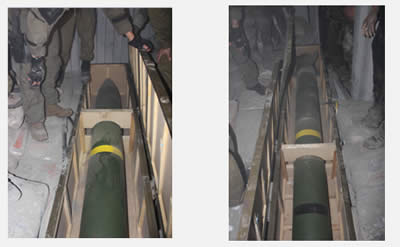The Death of Alberto Nisman – Initial Findings[1]
1. On January 18, 2015, Alberto Nisman, the Argentine federal prosecutor who investigated the terrorist attacks on the Jewish Community Center (Asociación Mutual Israelita Argentina, AMIA) in Buenos Aires in 1994, was found dead in his home in a Buenos Aires suburb with a gunshot wound to the head. A .22 caliber handgun was found next to the body; it was not registered to him.
2. According to initial reports he committed suicide, but the reports have not been confirmed. It is more likely that he was murdered by his enemies because of his determined objection to the attempts of the Argentine government to cover up Iran's responsibility for the two terrorist attacks on Argentine soil (the attack on the Israeli embassy in 1992 and the AMIA attack in 1994). Prosecutor Viviana Fein, who leads the investigation of Nisman’s death, said she could not rule out the possibility that he was "convinced" to commit suicide. However, on January 22, 2015, Argentine President Cristina Kirchner claimed that a prosecutor who died just as he was due to accuse her of covering up a Jewish bombing was murdered to implicate her. She argued that Nisman did not commit suicide, but was instead killed in an "operation" against her government (Dailymail.co.uk, January 22, 2015).[2]
3. The day after his death (January 19, 2015), Alberto Nisman was supposed to testify at a hearing held behind closed doors at the Argentine Congress. The hearing would have dealt with Nisman's accusations that Argentine President Christina Kirchner and Foreign Minister Héctor Timerman tried to make an arrangement with Iran that would take its involvement in the terrorist attacks off the Argentine agenda in return for political and economic benefits (See below).
4. On January 14, 2015, four days before Nisman's death, he issued an approximately 300-page report (including evidence from wire taps and other sources) in which he detailed his accusations against the president and foreign minister. He stated that associates of the president had secretly negotiated with Iran for a deal that would normalize relations between the two countries. Part of the deal included an offer to cancel the international Interpol arrest warrants issued for senior Iranians in return for economic benefits, such as the import of Iranian oil and the export of Argentine wheat.
5. Based on the findings in the report, Alberto Nisman asked the Argentine court to initiate an investigation of the president and foreign minister for whitewashing Iran's involvement in the attacks and obstructing the investigation into them. He said that the cover-up and obstruction were reflected by the agreement Argentina and Iran signed in January 2013.
The Argentina-Iranian Agreement of January 27, 2015
6. On January 27, 2013, Argentine President Christina Kirchner announced that Argentina had reached an agreement with Iran, a so-called "truth commission," whereby both countries would "investigate" the circumstances of the attack on the AMIA building in Buenos Aires to "reach the truth." To that end a joint community would be appointed "to find the truth." Two days previously, Argentine Foreign Minister Héctor Timerman and Iranian Foreign Minister Ali Akbar Salehi, both in Addis Ababa, Ethiopia, for the 20th meeting of the Organization of African Unity, had signed a memorandum to that effect.

The Iranian foreign minister (left) and Argentine foreign minister (right) sign a memorandum of understanding to carry out a joint investigation to "discover the truth" about the AMIA bombing (Presidencia.gov.ar, January 25, 2013).
7. According to the agreement, the joint investigative committee was supposed to be composed of international jurists who would be chosen by the two countries, but none of whom would be a citizen of either one. They would be able to meet with anyone mentioned in the material compiled by Argentina and Iran investigators and allegedly interview them freely. It was also agreed that the signed memorandum would by presented to the secretary-general of Interpol, who was involved in the investigation and the search for the suspects after the international arrest warrant had been issued and periodically renewed (Website of the Argentine president's office). However, Alberto Nisman persisted in his objection to the cover-up of Iran's involvement in the terrorist attack. His position was endorsed by the Argentine court, which later prevented the appointment of the joint Argentine-Iranian "investigative committee."
8. Argentina's diplomatic and commercial ties with Iran deteriorated after the Argentine authorities issued international arrest warrants in 2006 for seven senior Iranian figures and senior Hezbollah terrorist Imad Mughnieh. The warrants were issued on the grounds that they were suspected of involvement in the terrorist attack on the AMIA building in Buenos Aires. Approximately five years later the Argentine regime began looking for ways to improve relations with Iran at the expense of the investigation into the AMIA attack.
9. In March 2011 Perfil, a daily Buenos Aires paper, reported that the Argentine foreign minister was secretly negotiating a deal with Iran in which the Argentines would "forget" the bombings of the Israeli embassy and AMIA building in return for improved relations with Iran. According to the paper, the Argentine government was prepared to freeze the investigation of the bombings in return for the renewal and improvement in commercial relations with Iran (Haaretz.co.il, March 27, 2011). Iran, for its part, denied any involvement in the attacks, but in July 2012 proposed holding talks with Argentina to "shed light" on the affair.
10. In September 2011 the Argentine president told the UN General Assembly that Argentina was willing to hold a dialogue with Iran and called on Iran to show good faith and help the investigation into the bombings. She said that it was a proposal for a dialogue that Argentina could not and should not reject." As a gesture to Iran the Argentine representative to the UN remained in his seat during the speech given by Iranian President Ahmadinejad, who attacked Israel, and did not leave the room, as did the representatives of many other nations, to protest his rhetoric (Reuters.com, December 5, 2011).
11. The Argentine effort was rewarded in a 2013 agreement signed with Iran which, in ITIC assessment, reflected the interests of both sides: Iran would be able to continue denying the involvement of senior Iranians in the terrorist attacks in Argentina, and Iran would be able to overcome its image as a terrorism-sponsoring country and improve its relations with the rest of Latin America.[3] The agreement would allow Argentina to improve its relations with Iran and receive economic benefits in return for dropping from its political agenda the issue of the 1990s Iranian-orchestrated terrorist attacks.
Appendices
12. Two appendices follow:
1) The Iranian-orchestrated Hezbollah suicide bombing attacks of the AMIA building and the Israeli embassy in Buenos Aires.
2) Intelligence and Terrorism Information Center bulletins dealing with the bombings in Buenos Aires, available on the ITIC website.
[1]Initial findings update to January 20, 2015, based on Argentine and global media reports.
[2]http://www.dailymail.co.uk/news/article-2921838/Argentinian-president-Cristina-Kirchner-says-prosecutor-murdered-implicate-her.html
[3]For further information about Iran's activities in Latin America, see the April 18, 2012 bulletin "Latin America as a Terrorist, Subversive, Criminal Arena for Iran and Hezbollah."





















![Gazans hold signs with demands for Palestinian Prime Minister Rami Hamdallah. They read, "We want a government!!," "We want heath [services]," "We want the crossings [opened]," "We want salaries" (PALDF, December 29, 2014). Gazans hold signs with demands for Palestinian Prime Minister Rami Hamdallah. They read, "We want a government!!," "We want heath [services]," "We want the crossings [opened]," "We want salaries" (PALDF, December 29, 2014).](/data/articles/Art_20751/209_14_11_1400622412.jpg)























